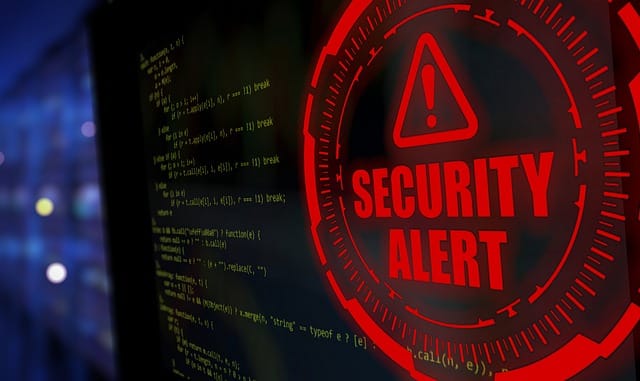In today’s increasingly digital world, the privacy and security of your personal information are paramount, especially on smartphones. Our iPhones store sensitive data, including private messages, location history, financial information, and even health records. Unfortunately, these devices are not immune to spyware—malicious software that stealthily tracks your activities, siphons your data, and monitors your movements without your knowledge. Spyware can be installed without permission, often bundled with seemingly harmless apps or disguised within system files.
If you’ve ever wondered how to check for spyware on iPhone, this guide offers comprehensive steps to help you detect, verify, and remove any spyware that may be lurking on your device. Whether you’re noticing suspicious behavior or just want to ensure your iPhone is secure, this detailed article will provide actionable advice. By learning to identify the signs of spyware and taking preventative measures, you can regain peace of mind and enhance your iPhone’s security.
1. What Is Spyware and How Does It Impact Your iPhone?
Spyware is a type of malicious software designed to gather information from a device without the user’s knowledge. It may record keystrokes, monitor browsing activity, capture screenshots, or track GPS locations. Some spyware is even sophisticated enough to record conversations and access sensitive data within secure apps. When it comes to iPhones, spyware often requires some initial access, such as being installed via a phishing email or text message. Once installed, it can operate undetected, giving an attacker ongoing access to your private data.
Understanding spyware’s impact is essential to grasping how to check for spyware on iPhone. The presence of spyware can slow down your device, drain your battery, and cause overheating due to the continuous background activity. Beyond the technical impact, spyware also poses serious privacy risks, as attackers could potentially misuse your data for identity theft, financial fraud, or even personal harassment. Being aware of these risks highlights the importance of learning to check for spyware on your iPhone.
2. Common Signs of Spyware on an iPhone
The first step in learning how to check for spyware on iPhone is to recognize the signs of spyware. Although spyware is designed to be covert, it often causes subtle issues that affect device performance. Here are some of the most common symptoms:
Unexpected Battery Drain: Spyware constantly operates in the background, causing significant battery usage. If you notice your iPhone’s battery depleting faster than usual, spyware could be one reason.
Overheating: Does your iPhone feel unusually warm even when it’s idle? Continuous background activity, as seen with spyware, can lead to overheating, especially when other apps are closed.
Unusual Data Usage: Spyware requires an internet connection to transmit data to external servers. Consequently, you may see an uptick in data usage, even when you’re not actively browsing or using online apps.
Random Pop-ups or Ads: Some spyware types display unwanted ads or pop-ups, even when you aren’t browsing. This can be a red flag that your iPhone is compromised.
Slow Performance: Increased lag and slower response times can be a side effect of spyware. If your phone becomes sluggish, especially in response to simple tasks, this may signal a malware infection.
Identifying these signs early on is an integral part of understanding how to check for spyware on iPhone and keeping your device free from hidden intruders.
3. How to Check for Spyware on iPhone through Battery Usage
The battery usage feature in iOS can be a valuable tool in spotting suspicious activities on your iPhone. Since spyware often operates in the background, it can significantly increase battery consumption. Here’s how to inspect your battery usage:
Access Battery Settings: Go to Settings > Battery to view battery usage by individual apps. This shows you how much battery each app has consumed over the past 24 hours and 10 days.
Identify Unusual Activity: Look for apps that you don’t recognize or those that you rarely use but show high battery consumption. Such activity could indicate that an app is running spyware functions in the background.
Check for Unknown Apps: Some spyware disguises itself as a common app or uses a nondescript name to avoid detection. If you see anything unfamiliar, it’s worth investigating further.
Regularly checking battery usage can be an effective habit for those wanting to know how to check for spyware on iPhone.
4. How to Check Your iPhone for Spyware Using Data Analytics
iPhone data analytics is another tool that can reveal spyware. This feature logs system processes and activities, which can give away spyware if it’s running in the background.
Access Analytics Data: Go to Settings > Privacy > Analytics & Improvements > Analytics Data. Here, you’ll see a list of log files created by your iPhone’s operating system.
Look for Suspicious Entries: Review the list of files, focusing on unusual or random names that don’t resemble app names you’re familiar with. Spyware processes often use obscure titles or contain strings of characters, unlike standard app names.
Frequent System Crashes: Spyware can sometimes lead to random system crashes or abnormal behavior within the analytics data. Look out for terms like “crash” or “unexpected behavior,” which could indicate spyware.
Analytics data analysis is a technical but highly useful step in understanding how to check for spyware on iPhone.
5. Analyzing iPhone Storage for Unknown Apps
Spyware can sometimes appear as a legitimate app or a redundant one. Therefore, checking your iPhone’s storage for unknown apps is another step in the process of how to check for spyware on iPhone.
Access iPhone Storage: Go to Settings > General > iPhone Storage. Here, you’ll see a list of all apps installed on your device, including their storage usage.
Inspect Apps You Don’t Recognize: Carefully scroll through the list, especially looking for apps you didn’t install or names that seem unusual.
Delete Unknown or Redundant Apps: If you identify anything suspicious, delete the app immediately. This step alone can remove a variety of spyware infections.
Examining your storage for hidden or redundant apps is an excellent tactic for how to check for spyware on iPhone and quickly clearing unwanted software.
6. How to Tell if Spyware Is on Your iPhone Using Network Activity
Spyware frequently sends data from your device to external servers, which can cause an increase in data usage. Monitoring your network activity is a proactive approach in learning how to check for spyware on iPhone.
Install a Network Monitoring App: Many apps, like NetGuard or Fing, allow you to monitor network usage for each app. They can help you identify which apps are consuming excessive data.
Examine Data Usage Patterns: Check data usage logs for any unusual patterns, such as high data consumption from apps you rarely use.
Look for Data Transfers During Idle Times: Spyware often transmits data when the device is idle. If you observe data transfers when you’re not using your phone, it’s a potential indicator of spyware.
By keeping tabs on network activity, you can effectively monitor for signs of spyware on your iPhone.
7. Detecting Spyware on iPhone through Third-Party Apps
Although Apple’s App Store is highly curated, some trustworthy third-party apps can help detect spyware or monitor potential threats. Some recommended security apps include:
Avast Security & Privacy: Avast offers a security suite that includes anti-spyware features specifically for iOS.
Norton Mobile Security: Norton has an iOS-specific suite with spyware detection capabilities.
Using these apps can add a layer of protection in your quest for how to check for spyware on iPhone, especially if you’re looking for real-time monitoring.
8. Verifying iPhone Security Settings
Ensuring your iPhone’s security settings are optimized is crucial for preventing spyware. Key settings to review include:
Enable Face ID or Touch ID: Go to Settings > Face ID & Passcode (or Touch ID on older models) to enable biometric security, making it harder for unauthorized users to access your device.
Activate Two-Factor Authentication (2FA): Go to Settings > [Your Name] > Password & Security and enable 2FA for your Apple ID. This provides an extra layer of security by requiring a second verification step.
Checking these settings is essential for understanding how to check for spyware on iPhone and ensuring it’s difficult for spyware to gain access.
9. How to Check for Spyware on iPhone Using Software Updates
Regular software updates are critical in protecting your device from spyware. Apple frequently releases security updates to address vulnerabilities that spyware might exploit.
Check for iOS Updates: Go to Settings > General > Software Update to ensure your device is running the latest iOS version.
Automatic Updates: Enabling automatic updates ensures that your device is protected with the latest security patches.
Regular updates are a core part of how to check for spyware on iPhone, as they keep the device’s defenses strong.
10. Removing Spyware from Your iPhone
If you detect spyware on your iPhone, there are several ways to remove it:
- Restart Your iPhone: Sometimes a simple restart can disrupt spyware.
- Delete Unknown Apps: Remove any apps you don’t recognize or no longer use.
- Factory Reset: Go to Settings > General > Reset > Erase All Content and Settings to restore your iPhone to its original state. This method is effective but will erase all data, so be sure to back up important files first.
Conclusion
Learning how to check for spyware on iPhone is a vital part of keeping your digital life secure. By recognizing signs of spyware, using in-built features like Battery Usage and Analytics Data, and staying vigilant with security settings, you can protect yourself against digital intrusions. Regularly reviewing your phone for unknown apps, suspicious network activity, and leveraging trusted security software are proactive steps that can help keep your iPhone free of spyware. Remember, maintaining security on your iPhone is an ongoing process that requires periodic checks and updates.






